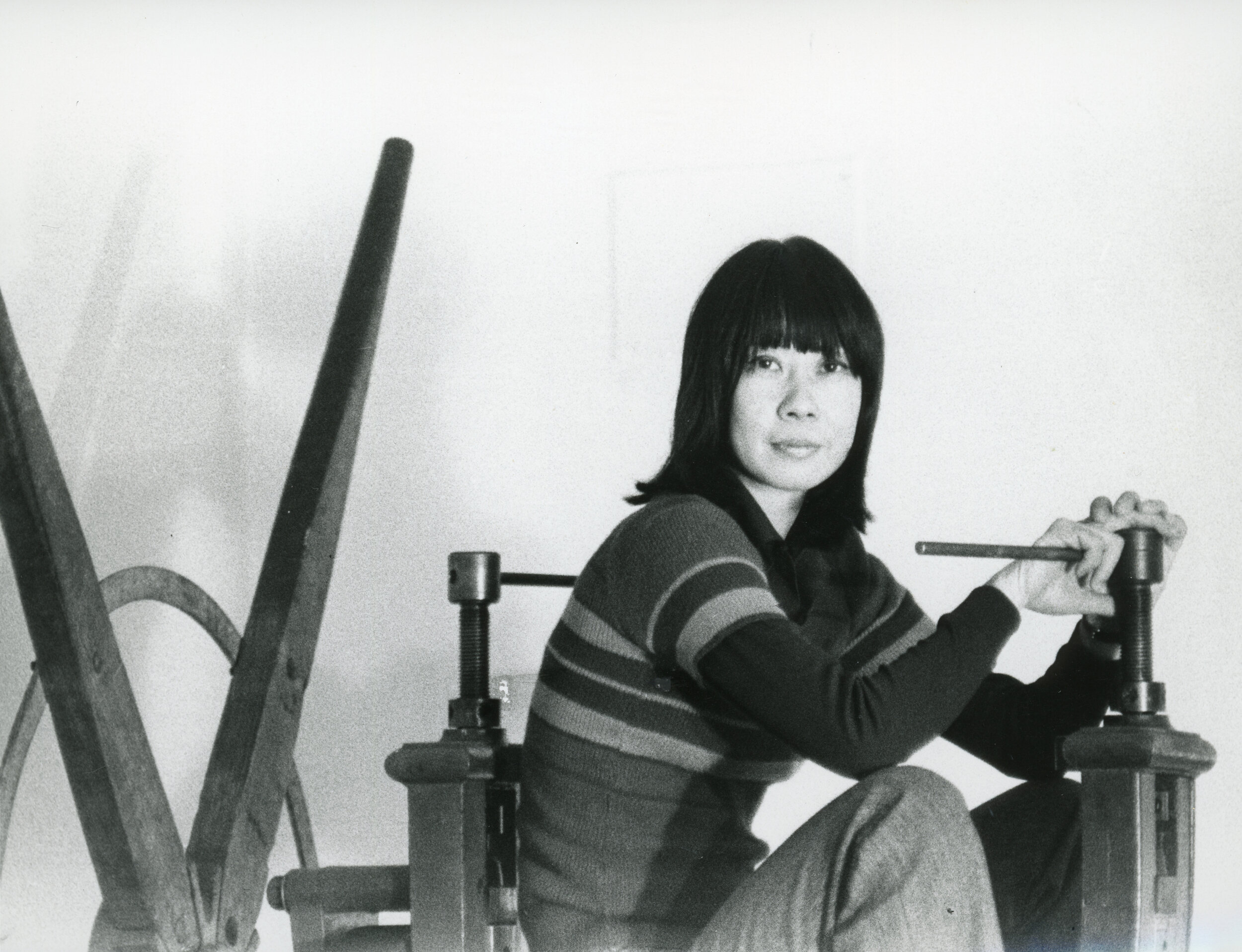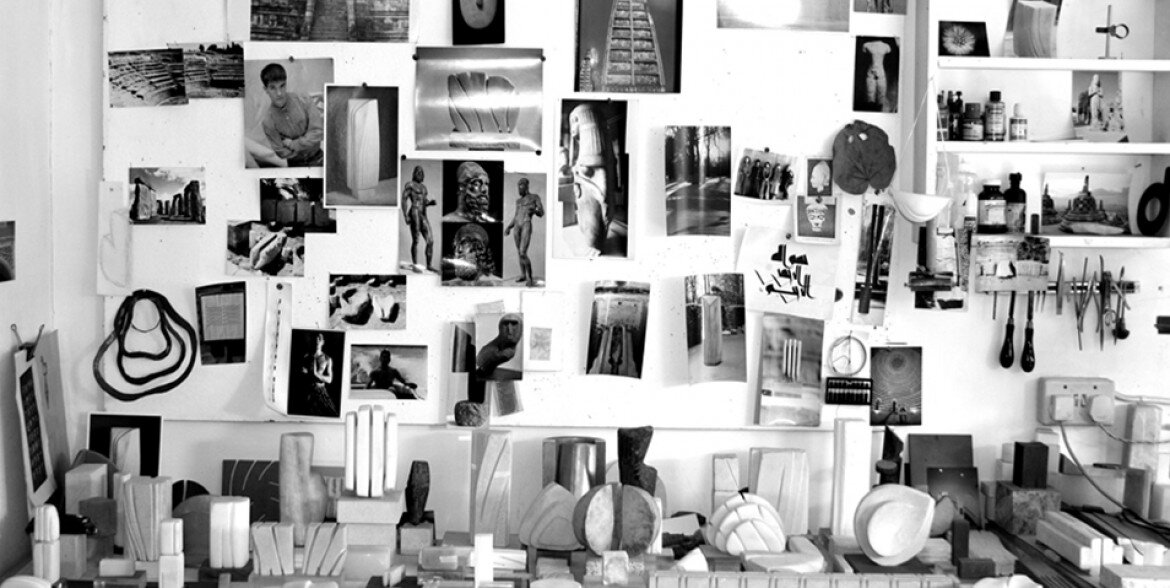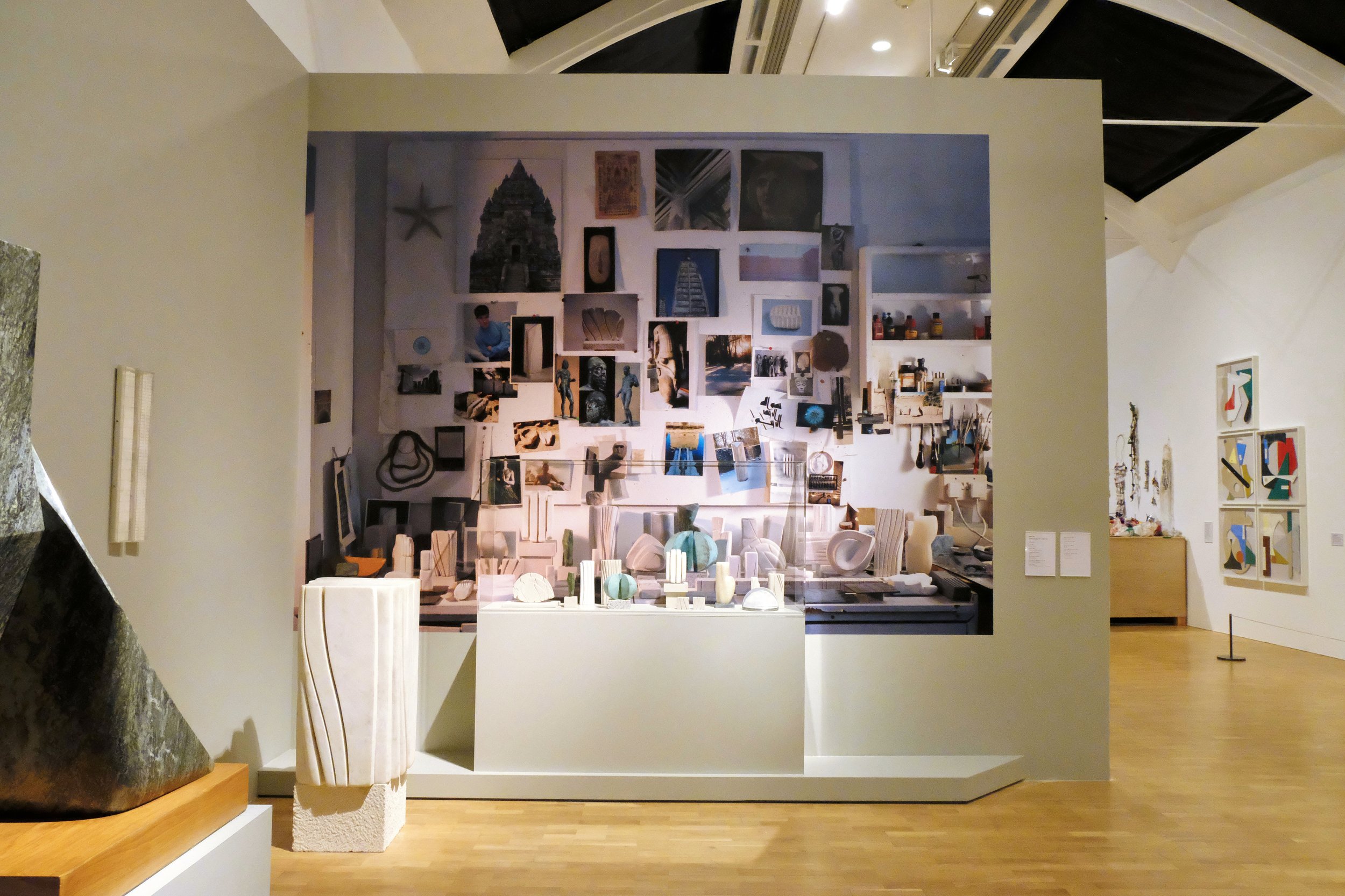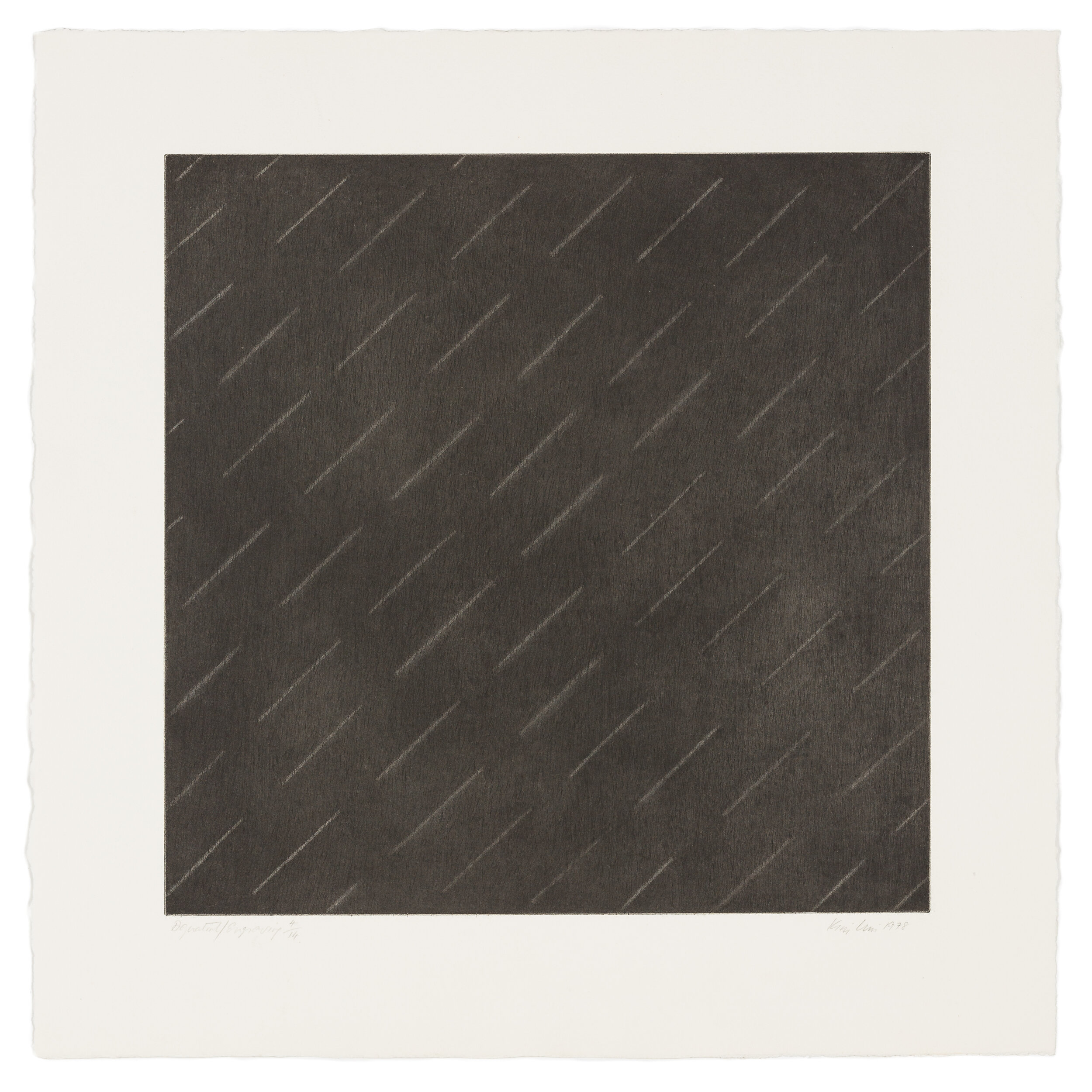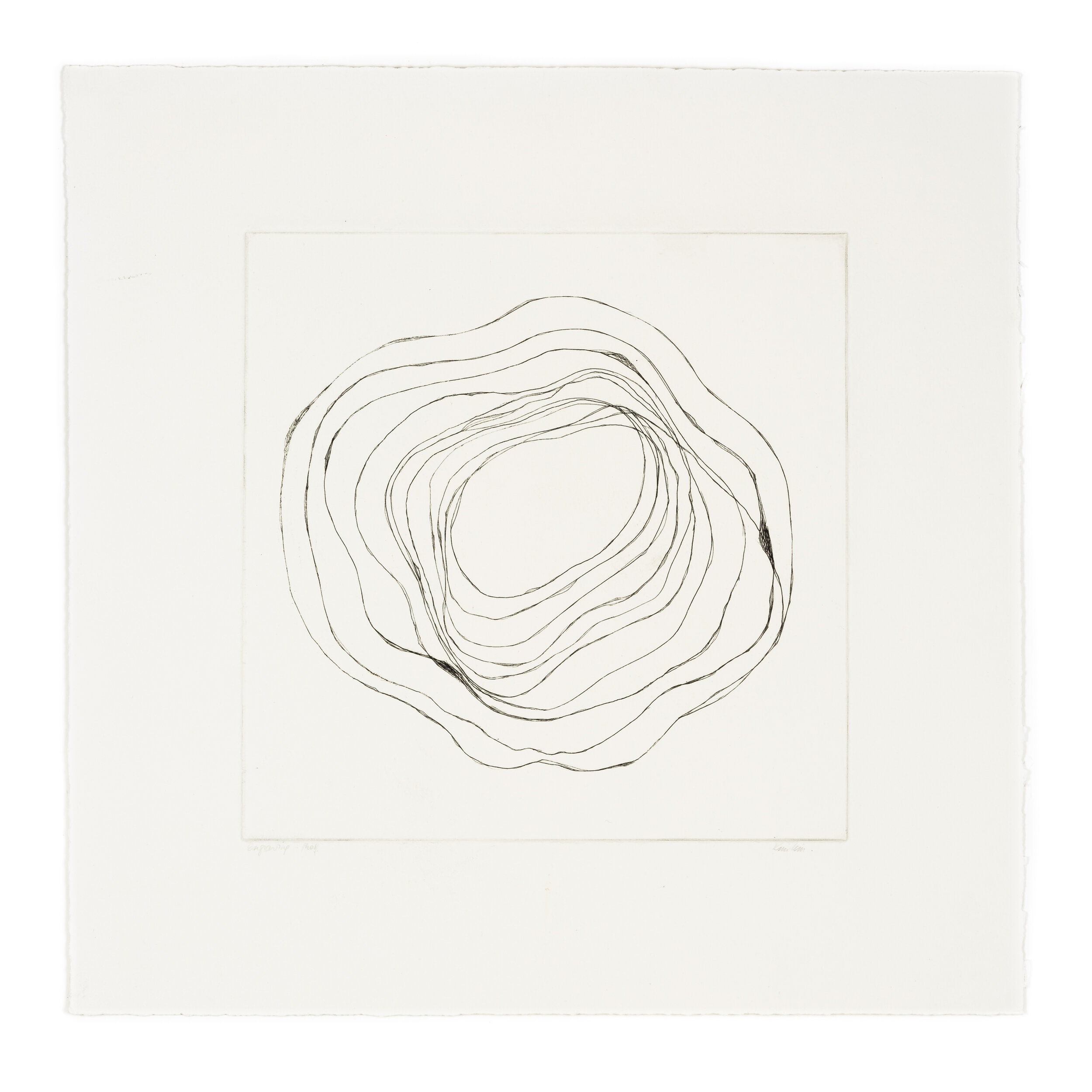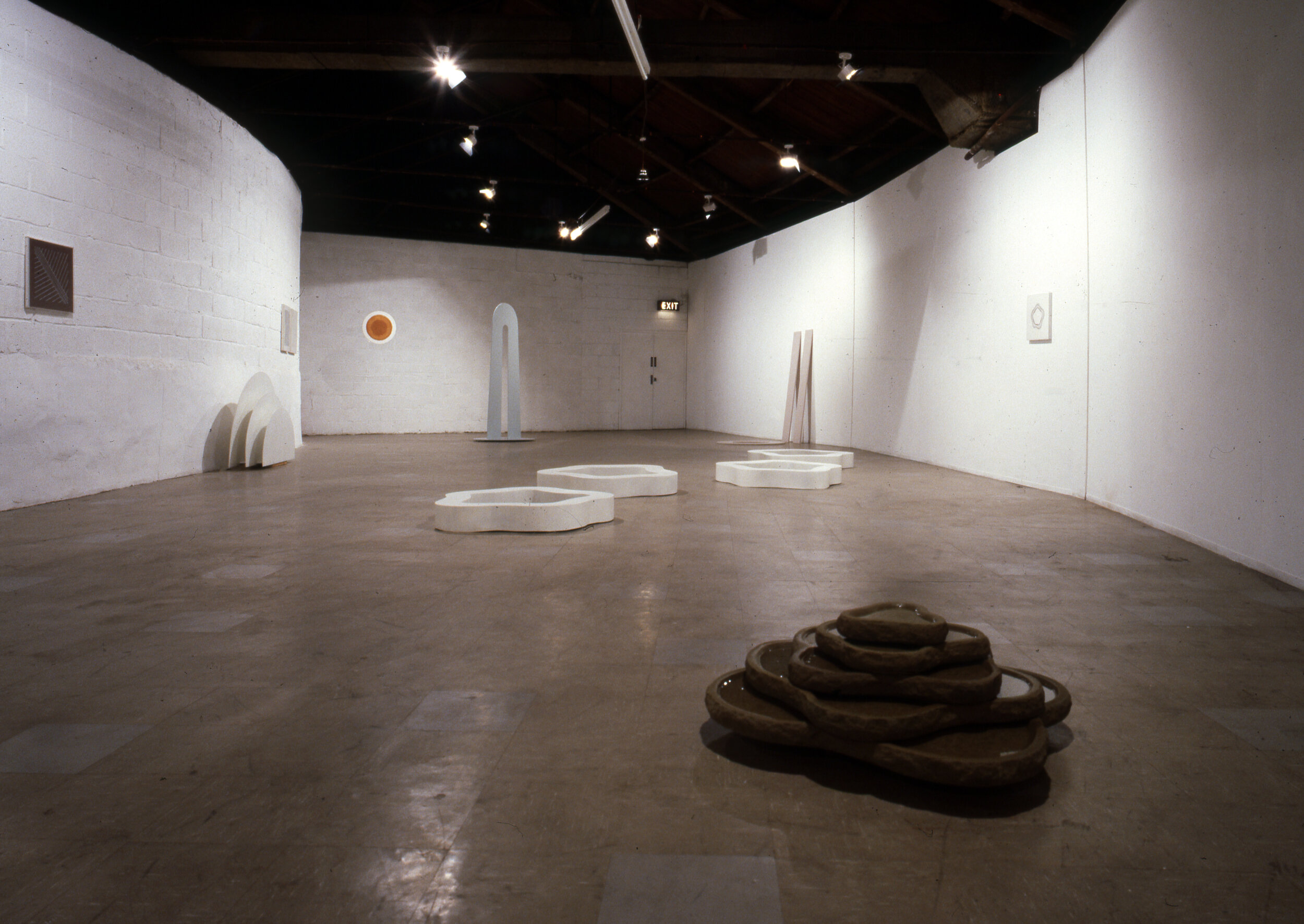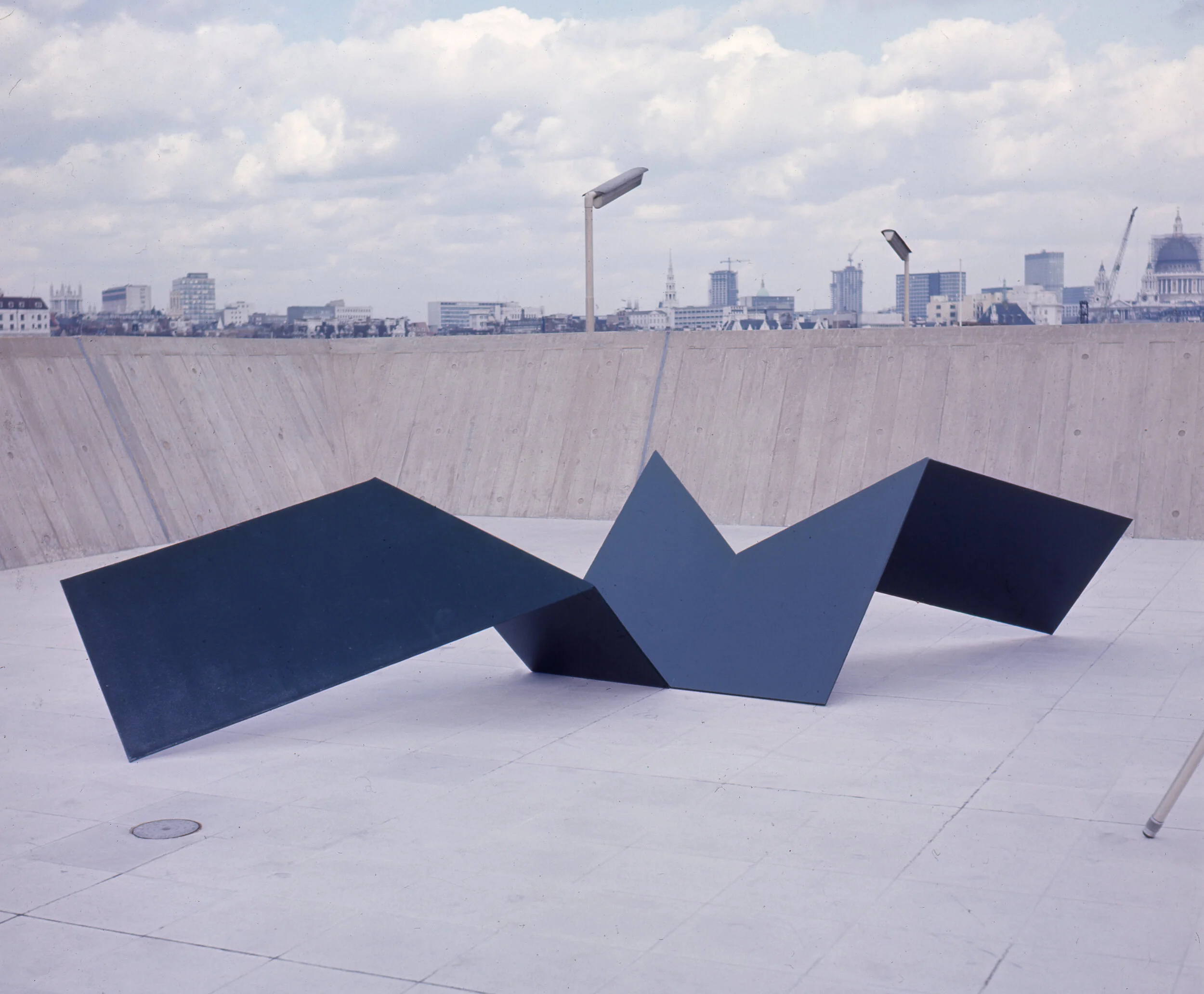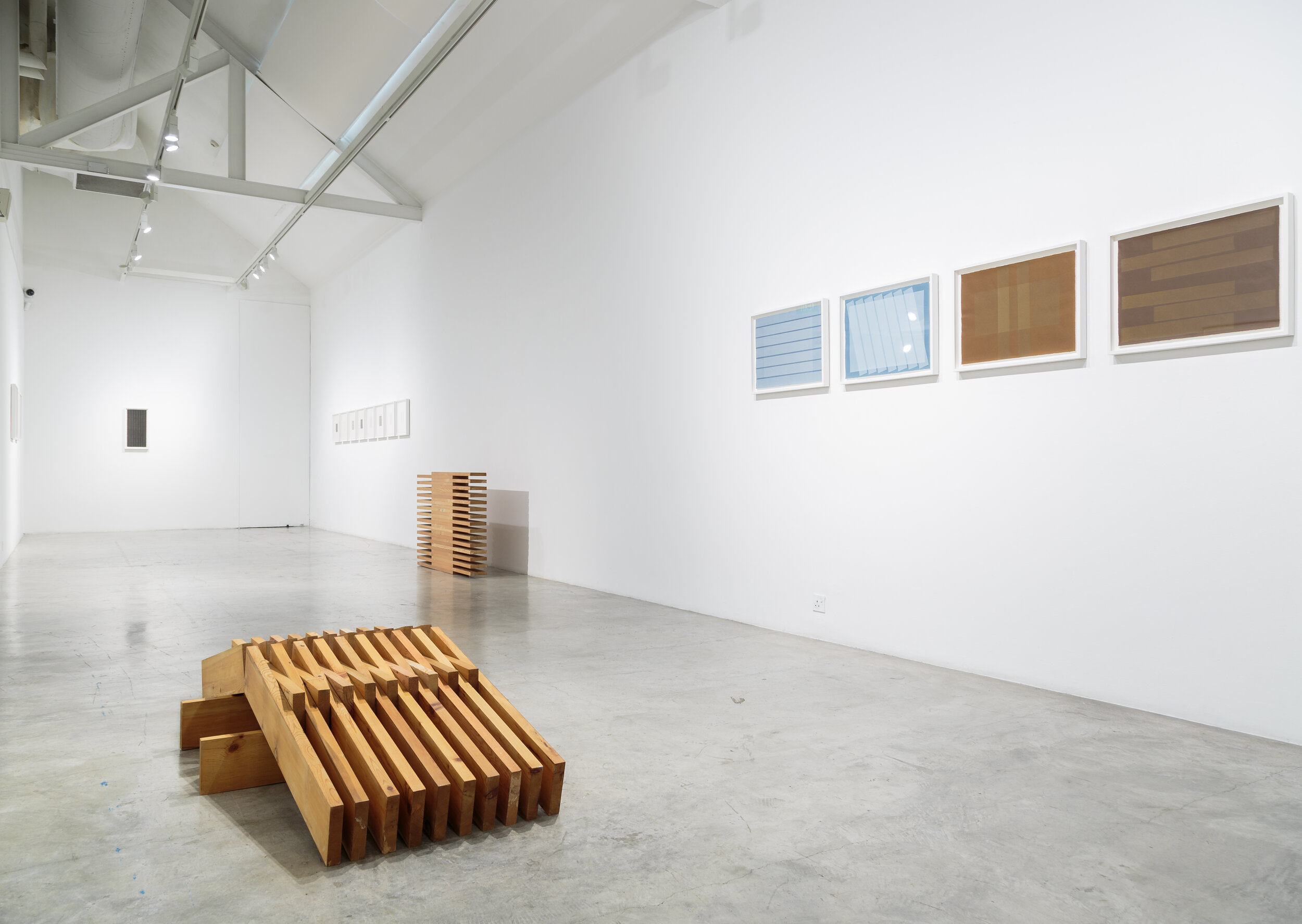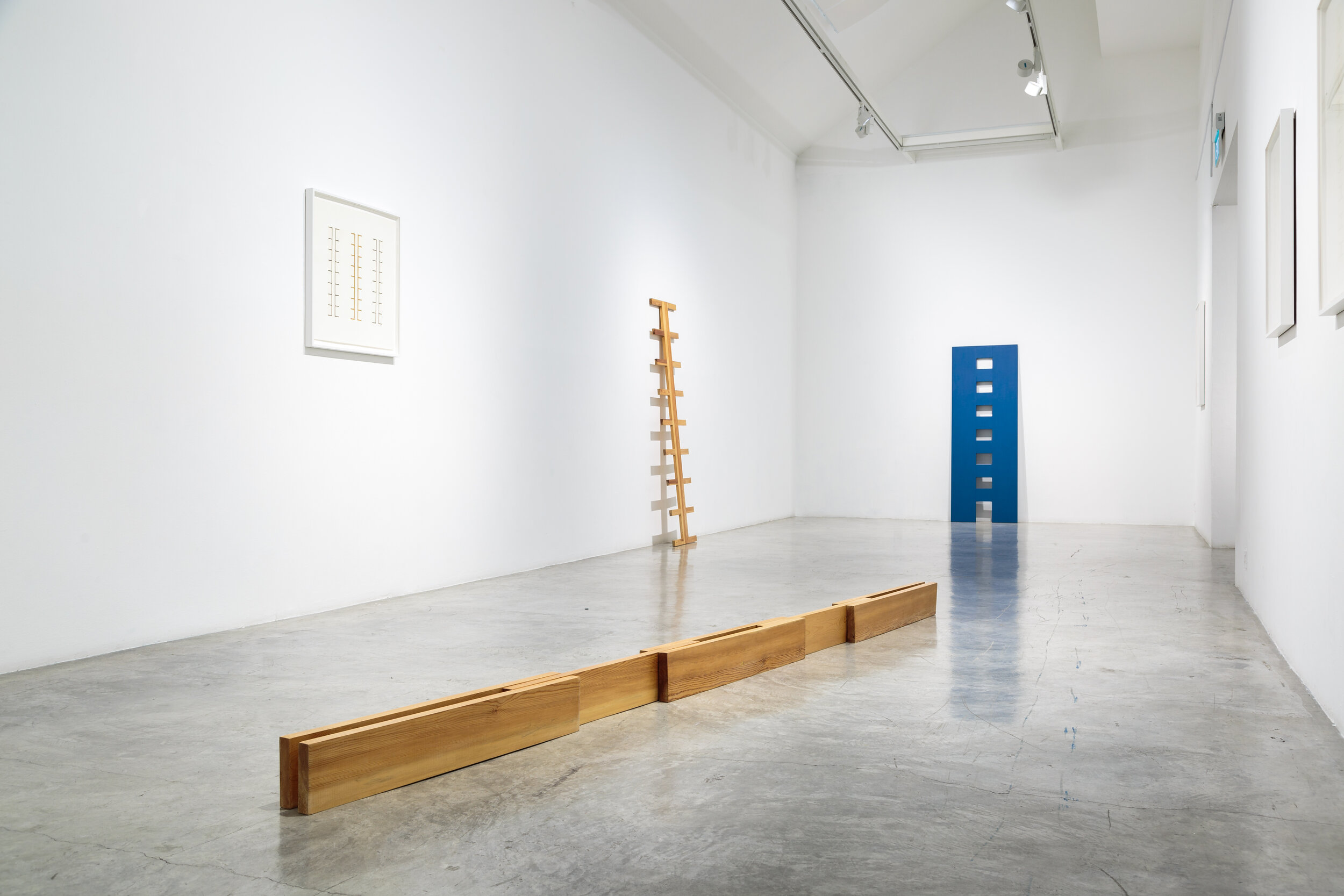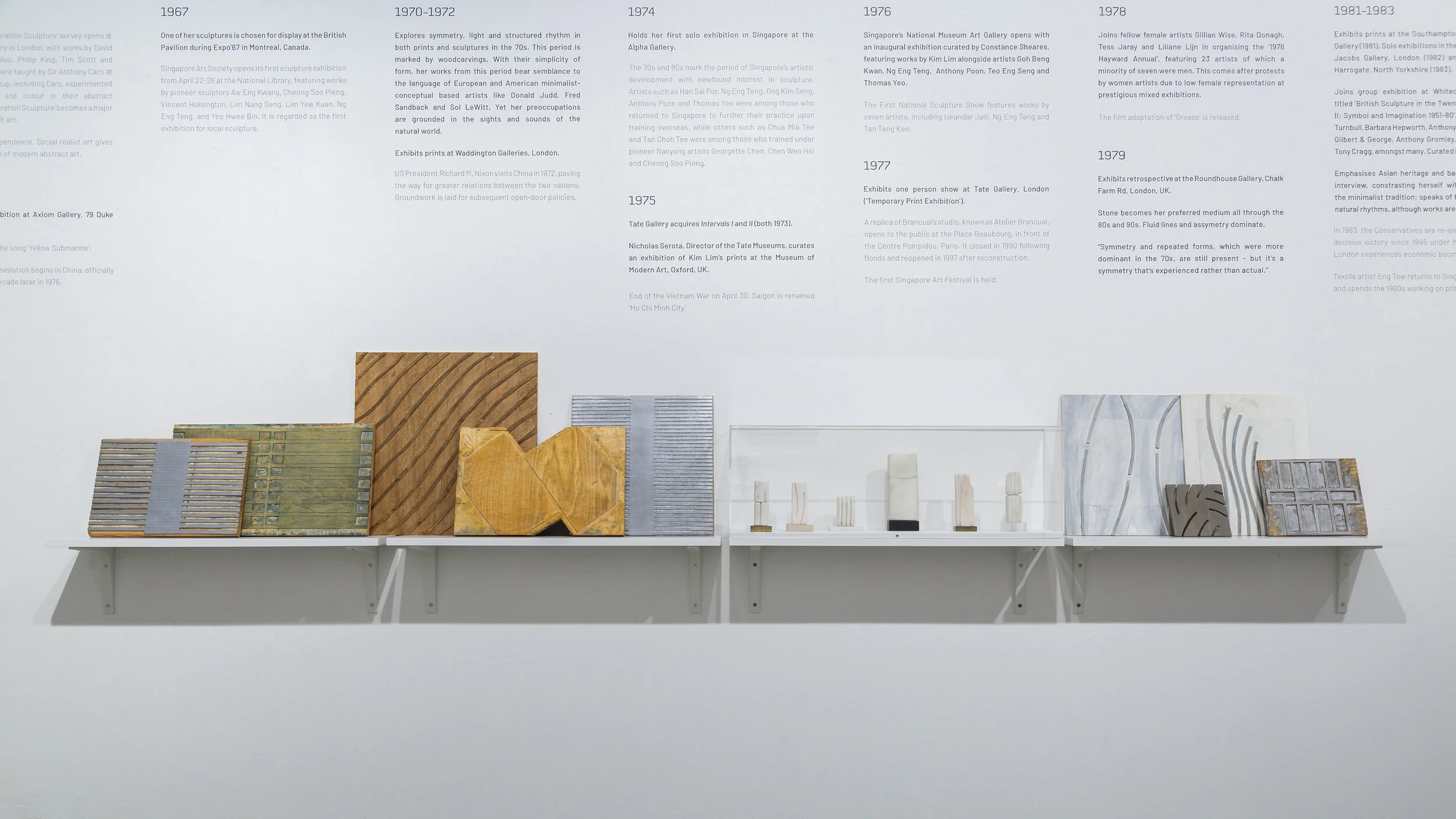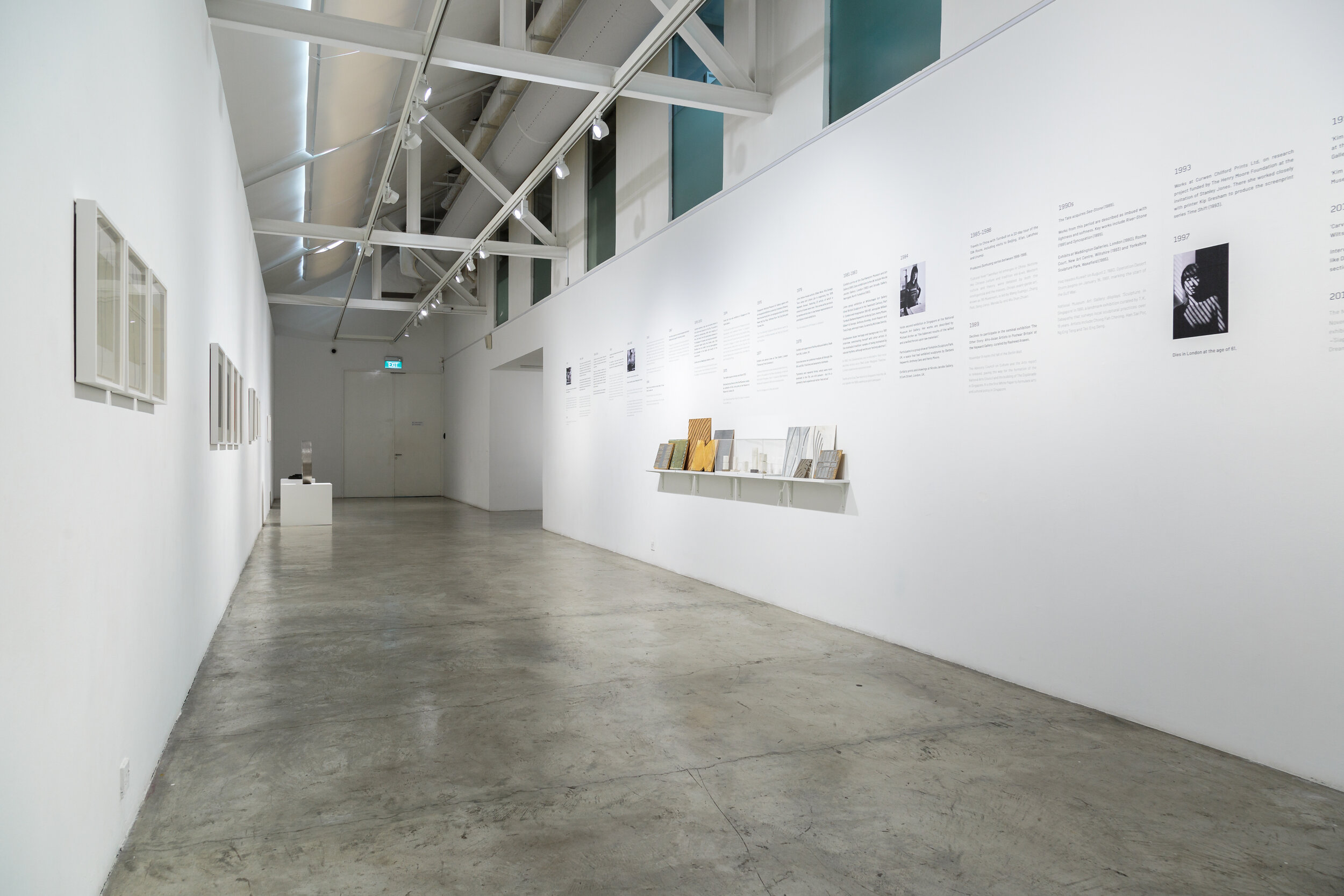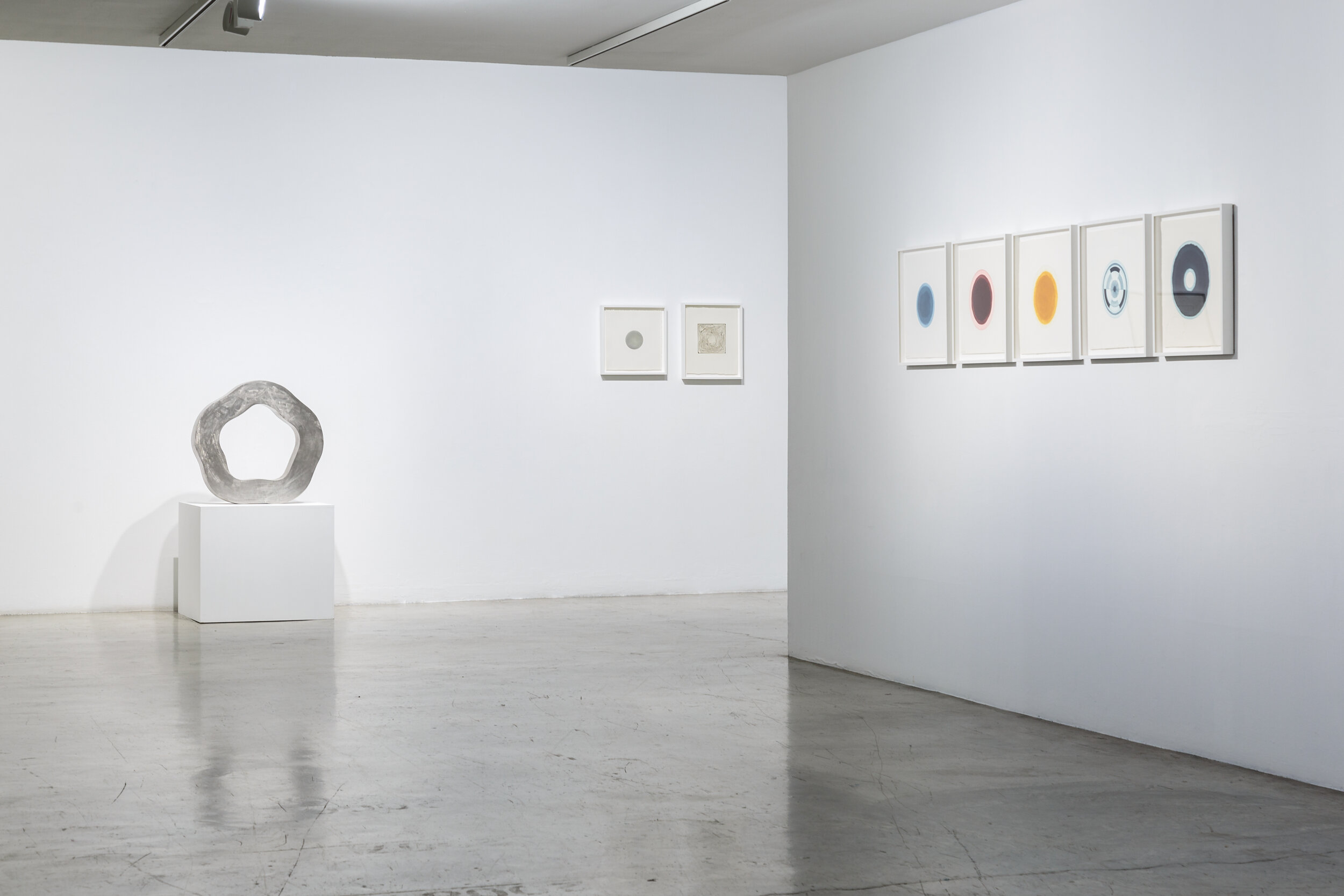Kim Lim (1936-1997)
Selected Recent Press
Kim Lim’s unique abstraction shines at Hepworth Wakefield
The Financial Times Review 15 Jan 2024 by Maya Jaggi
4 Stars Review - Kim Lim: Space, Rhythm & Light; Andrew Cranston: What made you stop here?
The Observer Review 14 Jan 2024 by Laura Cummings
The spare, graceful, revelatory sculptures of Kim Lim
Kim Lim in A Century of the Artist’s Studio 1920-2020
Whitechapel Gallery, London
24 February 2022 - 5 June 2022

Kim Lim: Carving and Printing
Spotlight at Tate Britain
7 September 2020 - 28 November 2021
Film Clip
Elena Crippa, Curator of Modern and Contemporary British Art, at Tate Britain on Kim Lim: Carving and Printing
Biography
In 1954, Kim Lim left Singapore for Britain with the aim of studying art and becoming an artist. In London, she enrolled at St. Martin’s School of Fine Art and later at the Slade School of Fine Art, studying printmaking and sculpture with equal enthusiasm—two approaches that formed the basis of her work in the four decades that followed. During those formative school years, Lim studied under Anthony Caro and befriended other artists like Tess Jaray and Julia Farrer. She was particularly fascinated by the work of Brancusi, a shared affinity with William Turnbull, who became her husband in 1960. Lim began exhibiting work relatively soon after finishing her studies, with her first solo exhibition at Axiom Gallery in 1966 where she displayed early, colourful works such as Borneo II and Candy (as seen in the studio shot below), acquired the year after it was made by the Arts Council Collection. She exhibited regularly through the 1970s and 1980s with Nicola Jacobs Gallery.
Much of Lim’s early work can be characterised by her engagement with materials such as wood and bronze. Her printmaking practice was equally pervasive and prominent from the beginning. Works such as Abacus I and II (1959), two sister relief sculptures, modelled after the ancient Chinese calculation tool, employ a poverty of material and reveal Lim’s ability to transform fundamental shapes and concepts with an elegant gesture. Made of plaster shapes hung on wire within a rectangular wooden frame, these works eschew “high art” material for simplicity of form. Both works are now in the collections of the Singapore National Gallery and M+ in Hong Kong, respectively. Lim extracted inspiration from her own personal journey from the East to West, with the vernacular of those artists she admired from the West such as Giacometti. Importantly, Lim looked outside the “canon” of art as well. A keen observer of nature and of natural forces, she would echo the sinuous curves of a vast desert plain, the waves of a silent sea breeze, and other experiential moments of life in her work. The strength of a Gingko tree’s trunk, for example, as seen in the 1989 sculpture titled after this living fossil, in which a monolith of rose aurora marble fluted and carved by hand rests on a Portland stone base.
Lim’s 1970s work is marked by a deeper experimentation into concepts of “form, space, rhythm and light”. Her series Intervals, which refers to both sculptural and paper works, employs negative space with equal detail as it does with ideas of density and volume. The year 1979 would prove be a watershed moment for the artist, culminating in a mid-career survey show at The Roundhouse where Lim would exhibit works from every period in a non-linear and non-chronological method, partly in response to the venue itself, a circular gallery space. This was also the year that Lim moved toward an embracing of stone and marble mediums, materials that would remain present in her practice until her untimely passing in 1997.
The reoccurring and circularity of Lim’s motifs—from the most “concrete” such as the interval, or chess piece to the more “abstract” such as the curve of a plant or the effect of a southernly wind blowing—that punctuate Lim’s practice reveal a close attention to that which is not readily visible, and the method and manner with which Lim draws these ideas out of her chosen material remains one of the most compelling aspects of her practice. Lim’s work and life has re-emerged with new attention: recent exhibitions such as Kim Lim at the New Art Centre, Roche Court, Salisbury (2014); two solo exhibitions at the now closed S|2 Gallery (2017 and 2018) which was accompanied by the first monographic publication on the artist; Kim Lim: Sculpting Light at STPI Gallery, Singapore (2018); Minimalism: Space. Object. Light. (2018-2019) and Suddenly Turning Visible: Art and Architecture 1969-1989 (2019-2020) both at the Singapore National Gallery, Singapore; and Objects of Wonder. British Sculpture from the Tate Collection 1950s-Present at Palais Populaire, Berlin (2019) and Kim Lim: Carving and Printing, a collection spotlight at Tate Britain (2020-2021) have made her practice more visible in the public realm. Yet this is only the beginning: as the art world systemically attempts to reconfigure, revise and re-balance aspects of recent art history to make space for new narratives, examining the life and work of Kim Lim in her own context and in the context of today’s scholarship is vital.
Despite her work disappearing from visibility within the institutional framework for over twenty years—her last major London museum show until the 2020 Tate Britain display was in 1999 at the Camden Art Centre—Lim’s work remains an important signifier of the British art scene in the post-war period and indicates both the internationalism at that time, as well as the universality and longevity of her artistic concerns. Often there is a misconception today, that artists who are undergoing this radical transformation of newfound re-evaluation by curators, institutions and collectors are also marred by a lack of visibility in their time. This was not the case for Kim Lim and is not for many artists of this generation. For example, Lim was the only non-white, female artist to be included in the 1977 Hayward Annual and the following year formed the all-women committee for the 1978 Hayward Annual, alongside Rita Donagh, Liliane Lijn, Tess Jaray and Gillian Wise Ciobotaru, selecting artists for an exhibition which included both women and men active at the time. Equally, Lim also resisted any sense of “othering” during her lifetime, declining to be included in Rasheed Araeen’s 1989 exhibition The Other Story: Afro-Asian Artists in Post-War Britain at the Hayward Gallery, because she did not want to be “othered” by association.
Lim and Turnbull travelled the world, engaging with artist communities in America, notably the Abstract Expressionists, but also embedding themselves in the cultures of the Middle East, East and Southeast Asia. As Lim explained in her own writings: “In those days if you had a ticket from A to B, you were allowed to stop off en route for a couple days and catch the next convenient flight onwards – you were even allowed to make small deviations so long as it was in the direction of the destination. The result was I saw a lot of extraordinary, breathtaking paintings, sculpture and architecture first hand. I felt like a sponge soaking up everything.” Lim’s so-called “deviations” are in fact profound moments for her as an artist, allowing her to step away from images, patterns and cultures that she was already aware of, and “soak” in new forms and a plurality of rhythms situated in both real and imaginary places. By closely examining the biases that have shaped our recent cultural landscapes, there is the possibility of creating space not only for the actual entanglement of transcultural experience, but also the chance to admire again, with fresh eyes, the power and enchantment of an artistic oeuvre such as that of Kim Lim’s.
Text: Bianca Chu, May 2021

Episode 3. Kim Lim
Sculpting Lives Podcast
Public Collections
Arts Council Collection, Hayward Gallery, London, UK
Atkinson Art Gallery, Southport, UK
Contemporary Art Society, London, UK
Fukuyama City Museum, Hiroshima, Japan
Government Art Collection, London, UK
I.B.M., New York, USA
Leicestershire Education Council, UK
Middelheim Museum, Belgium
M+ Museum, Hong Kong
Nagaoka Museum of Modern Art, Japan
Palm Springs Art Museum, Palm Springs, USA
Singapore National Gallery, Singapore
Southampton City Art Gallery, Southampton, UK
Tate Collection, UK
Wakefield Art Gallery, Wakefield, UK
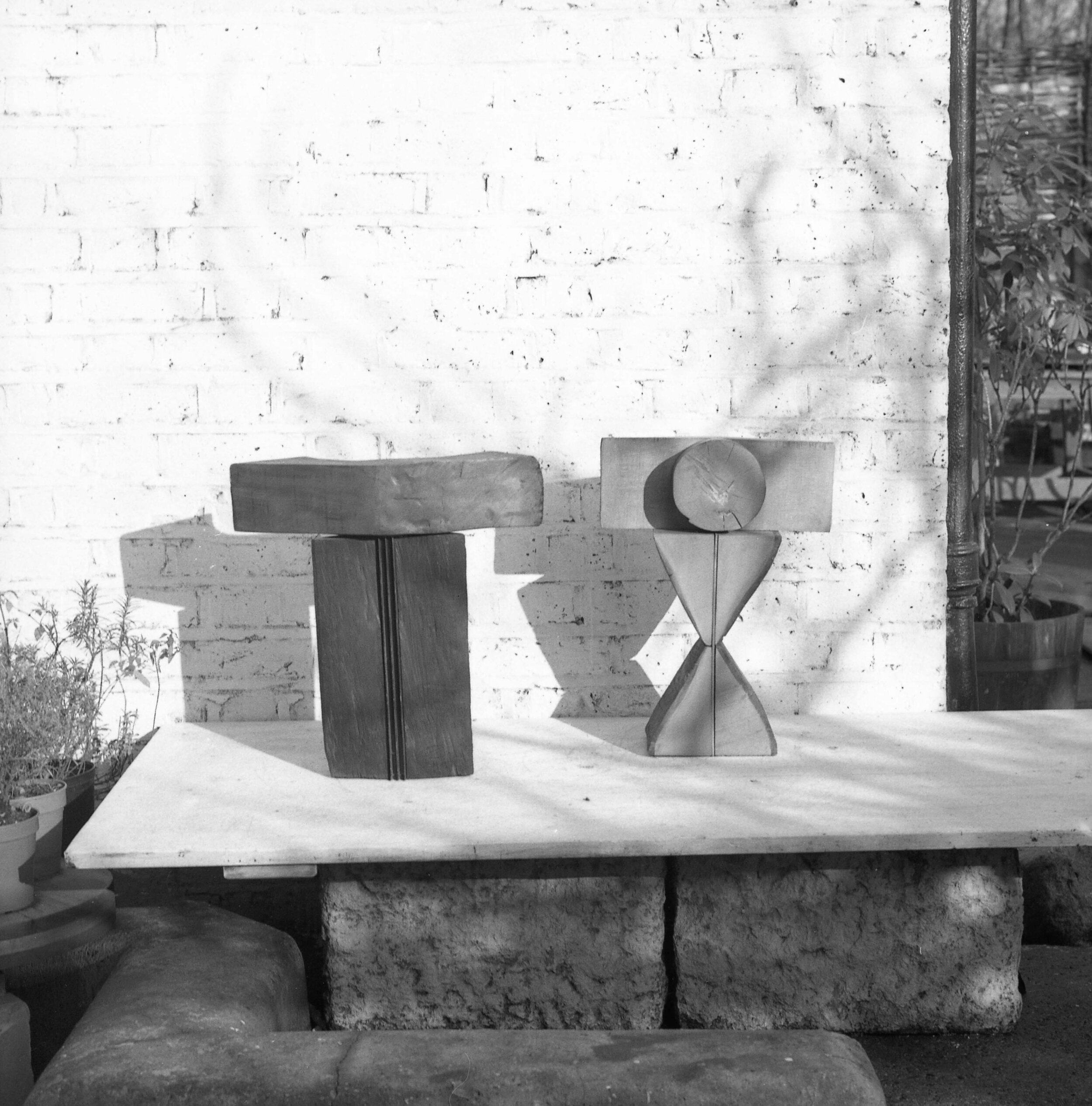

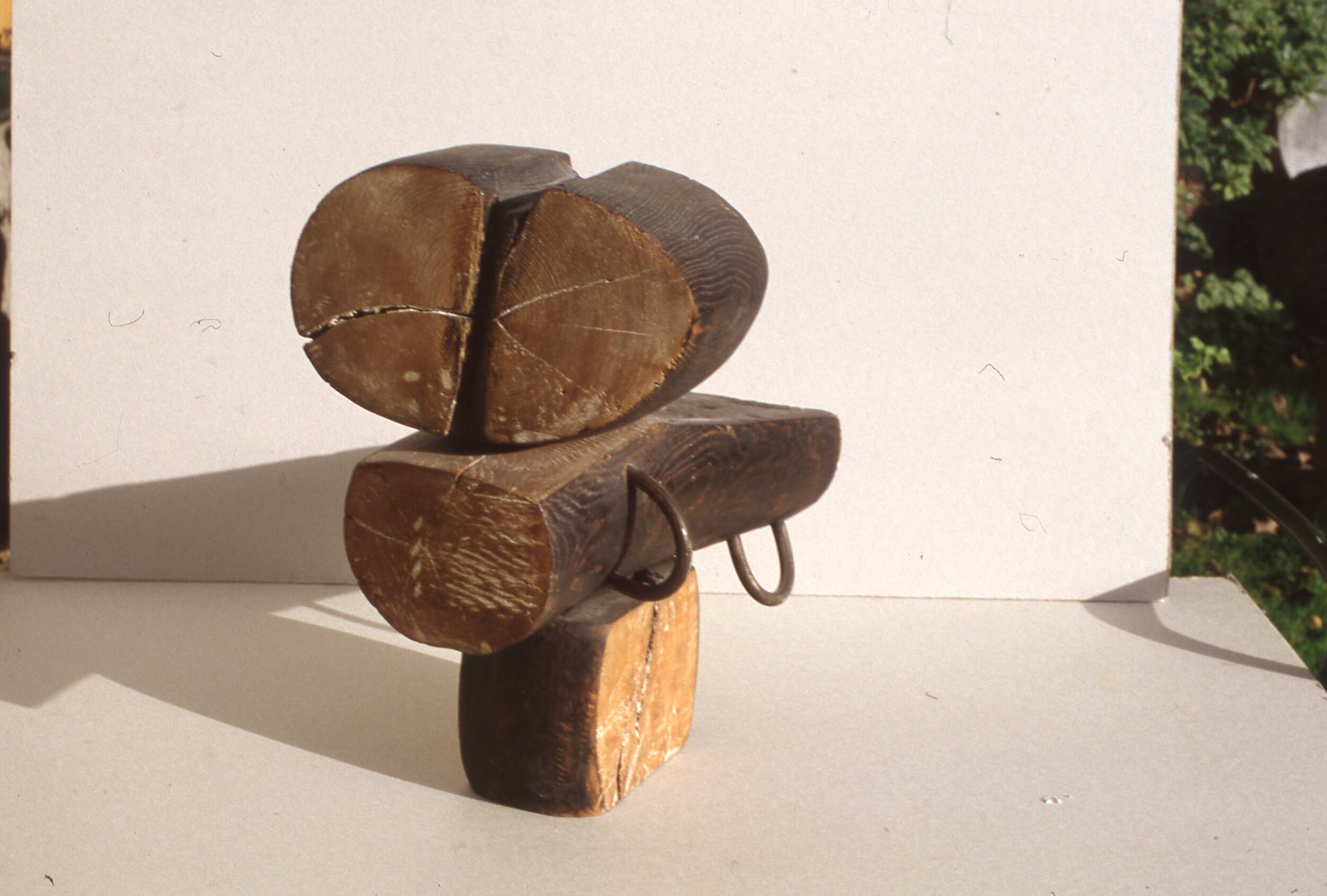
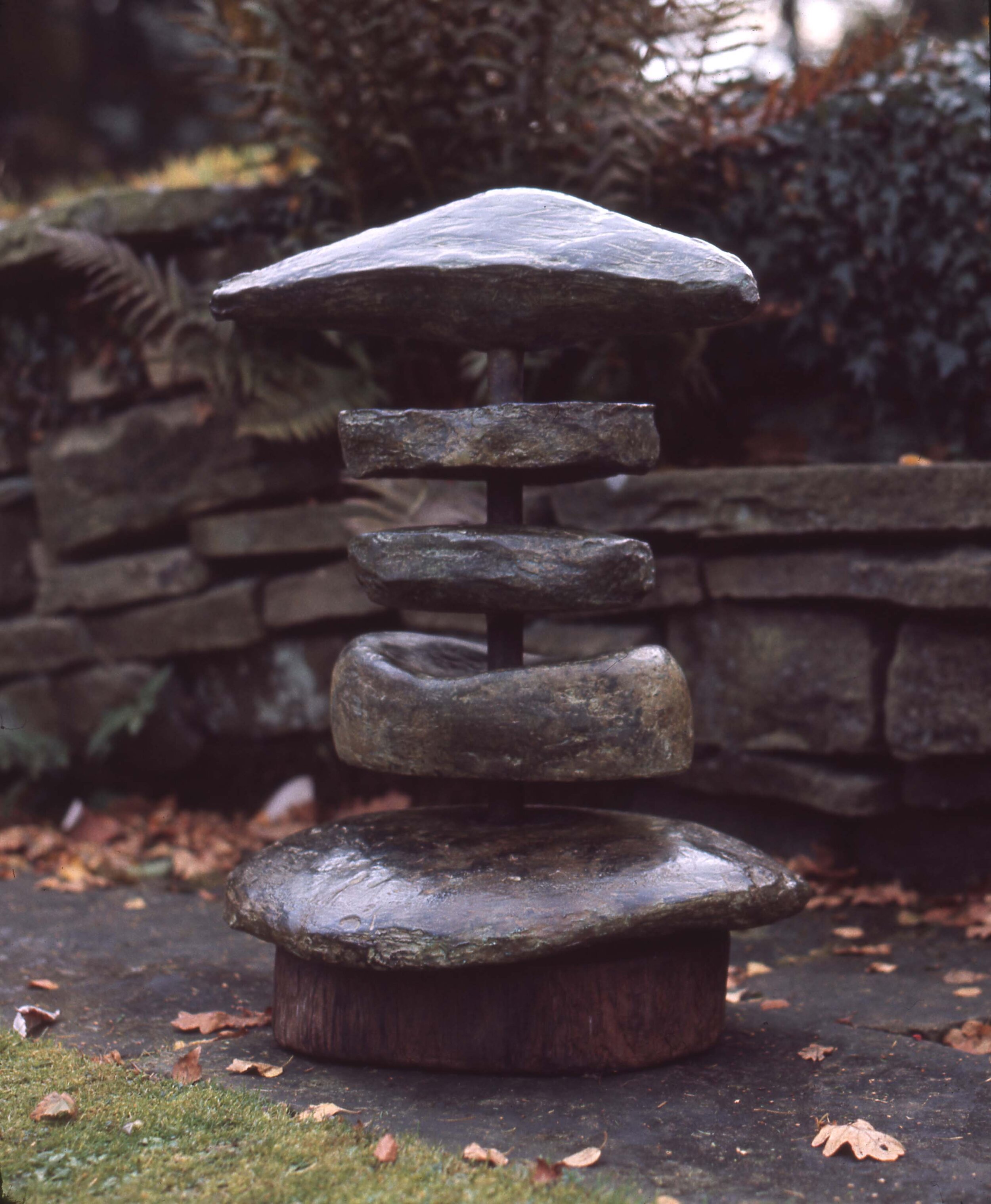
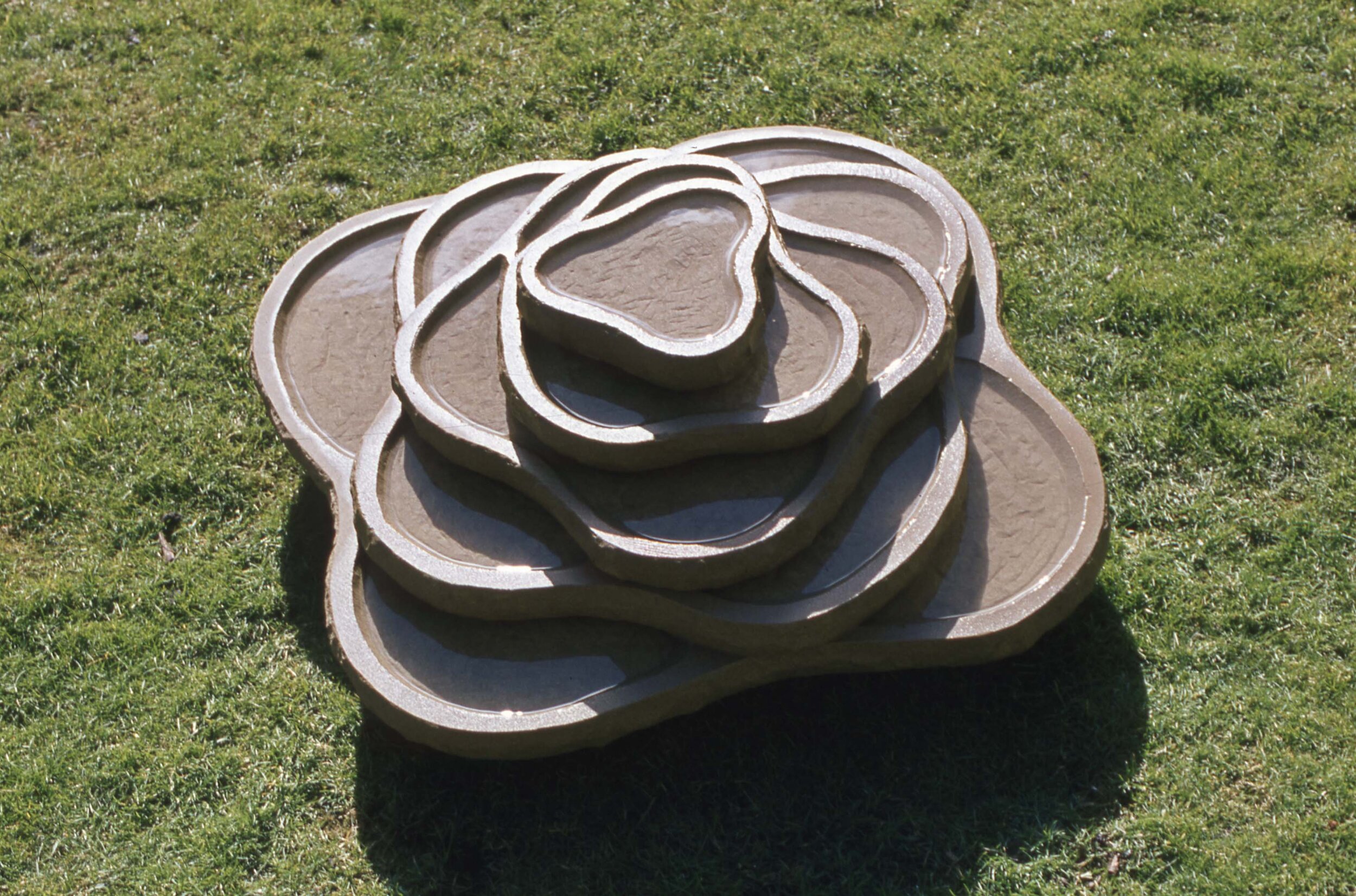



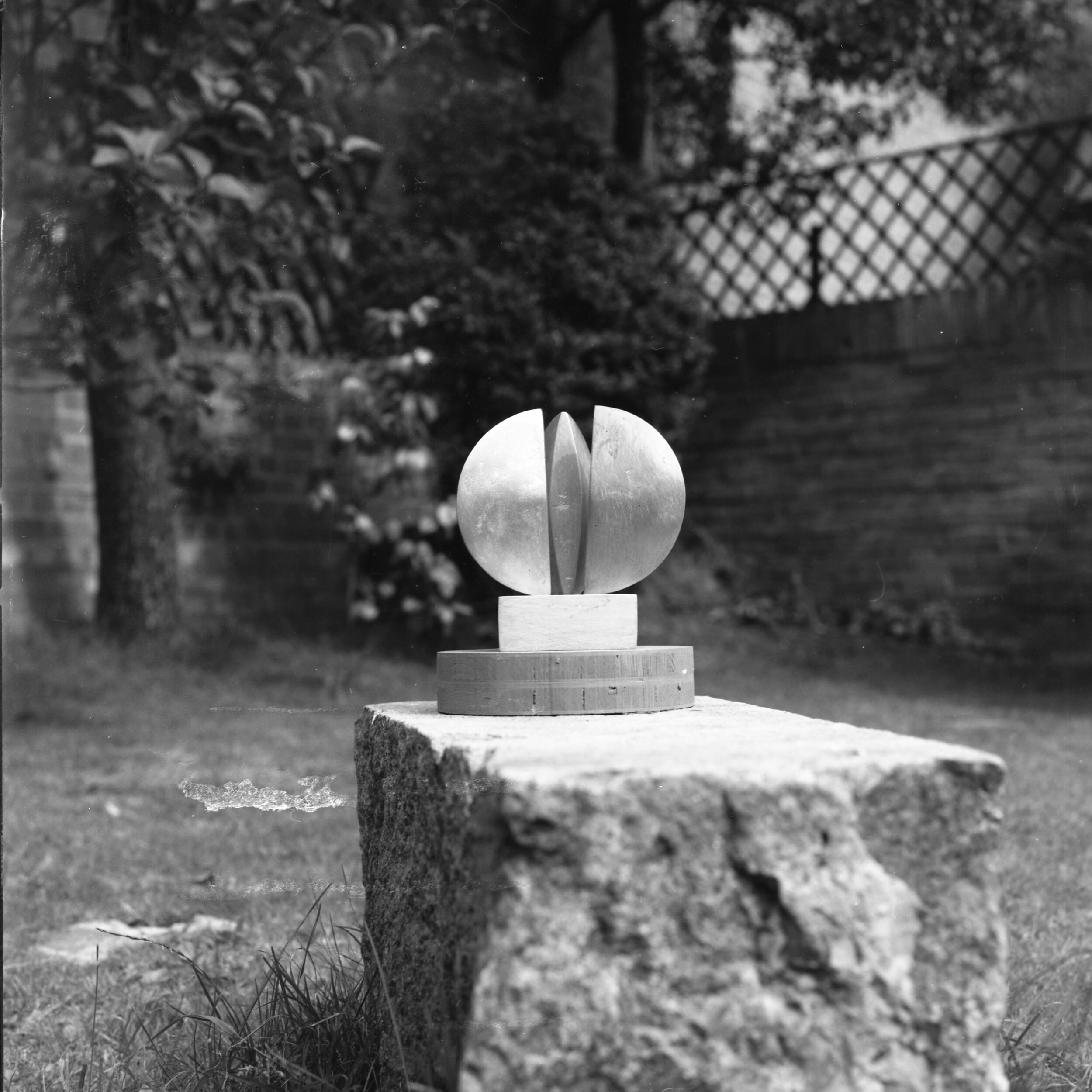




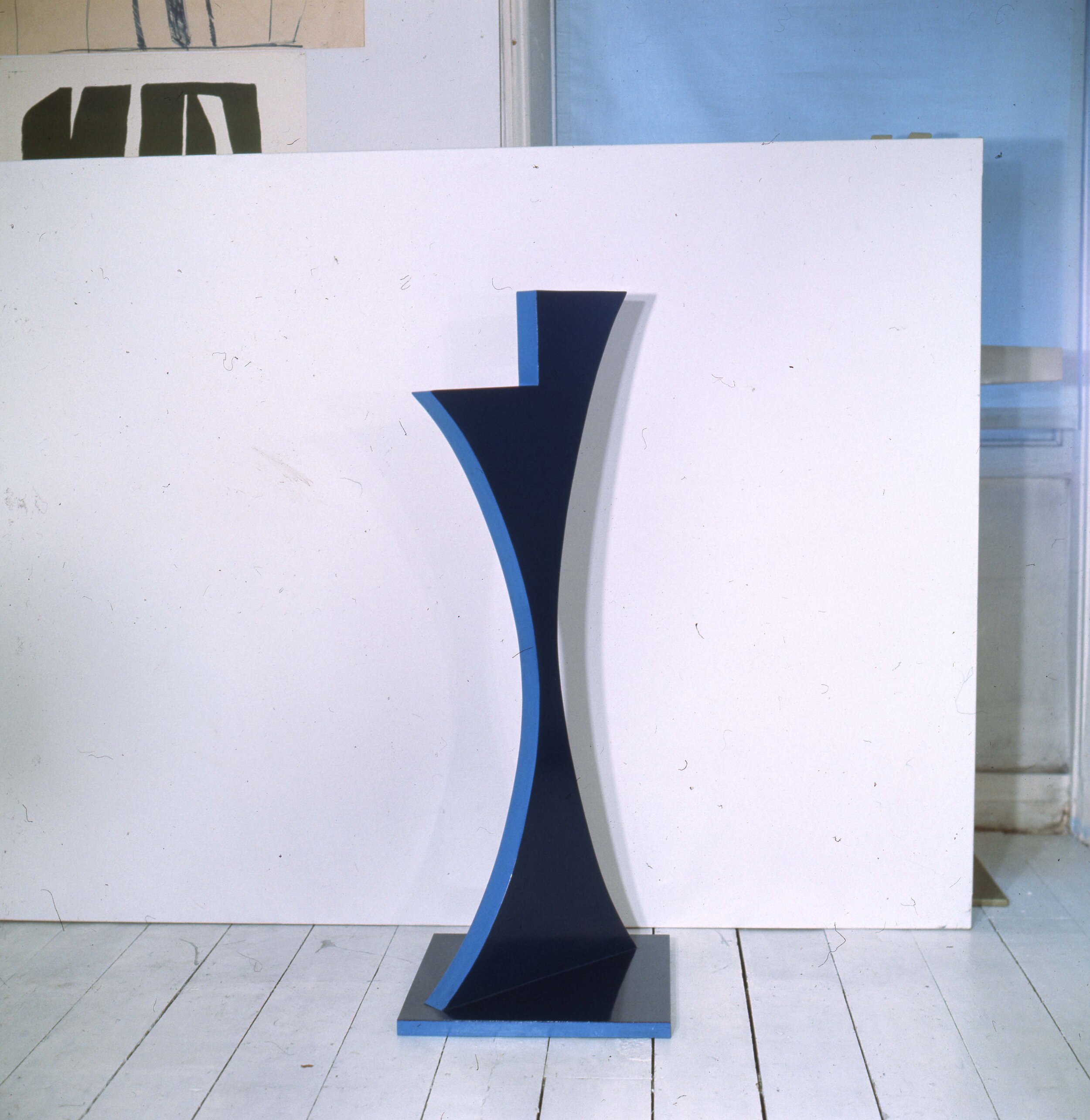
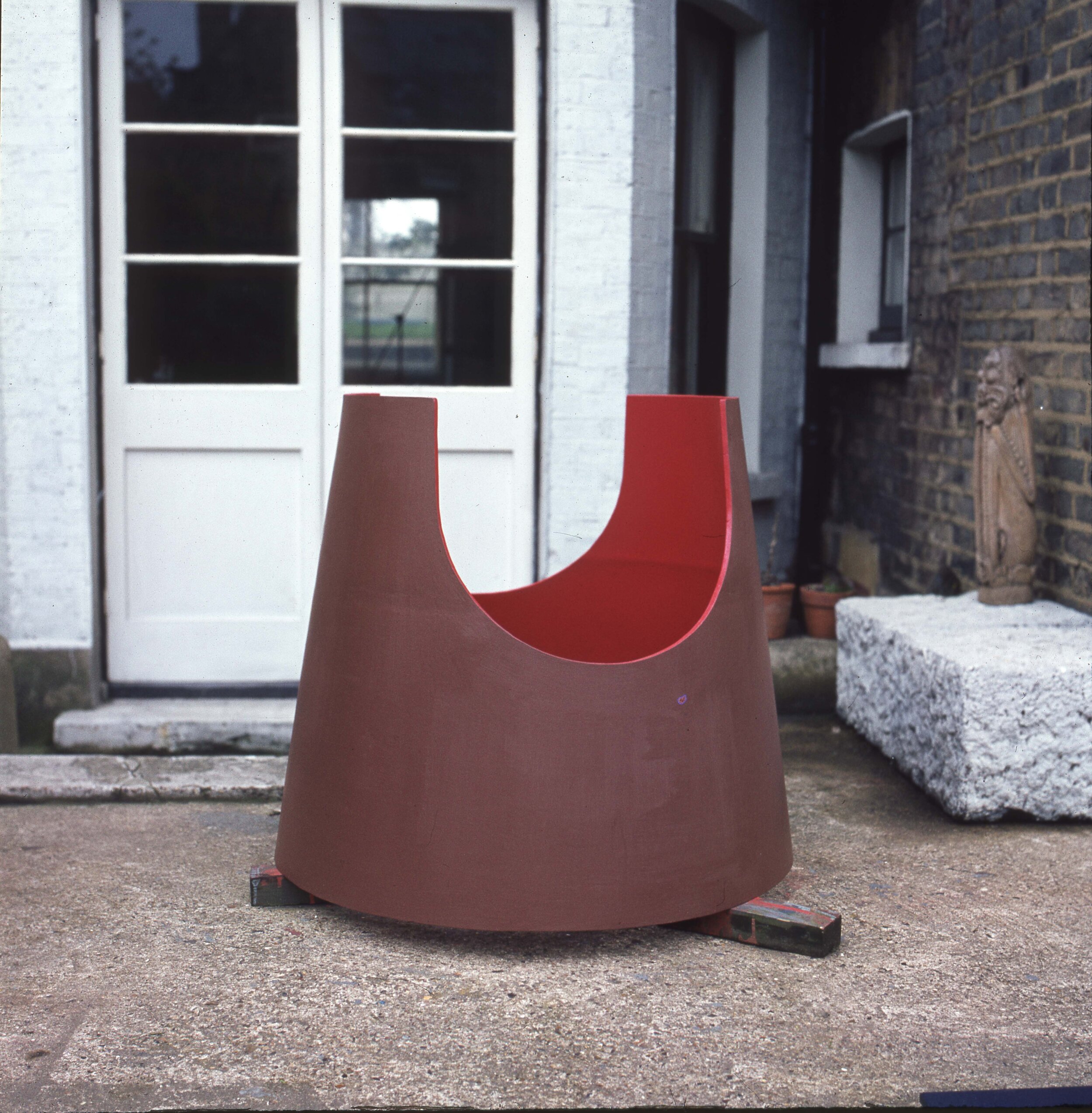
Selected Exhibitions
1961 26 Young Sculptors, I.C.A., London
Deuxieme Biennale de Paris, Paris
1962 Sculpture Today & Tomorrow, Bear Lane Gallery, Oxford
3rd International Biennale of Prints, Tokyo
1966 Kim Lim, Axiom Gallery, London
Sculpture in the Open Air, Battersea Park, London
Chromatic Sculpture, Arts Council Gallery, Cambridge
25 Camden Artists, Camden Central Library
1967 Expo ’67, British Pavilion, Montreal
Transatlantic Graphics, Camden Arts Centre, London
Leicestershire Collection, Whitechapel Art Gallery, London
Nagaoka Prize Exhibition, Nagaoka Museum, Japan
1967-70 Sculpture 1960-67 from the Arts Council Collection, Cumberland House Museum, Portsmouth; touring to Worcester; Leeds; Swindon; Hull; Walsall; Oldham; Plymouth; Leamington; Accrington; King’s Lynn; Lincoln; Stafford; Bolton; Doncaster; Sunderland; St. Ives; Southampton; Stockport; Kidderminster; Mansfield; Derby; Birkenhead; Falmouth; Folkestone; Cheltenham; Norwich; Reading; Brighton; Lincoln; Southend
1968 Kim Lim, Axiom Gallery, London
Sculpture in a City, Arts Council exhibition; touring to Post & Mail Building, Birmingham; Goree Piazza, Liverpool; Southampton Civic Centre
Summer Exhibition, Museum of Modern Art, Oxford
Prospect ’68, Dusseldorf
Mostra Mercato d’Arte Contemporanea, Florence
1969 Open Air Sculpture, Middelheim, Antwerp
1970 British Sculpture out of the Sixties, I.C.A., London
3me Salon Internationale de Galeries Pilotes, Musée Cantal des Beaux Arts, Lausanne, and Musée d’Art Moderne de la Ville, Paris
1973 Kim Lim: Prints, Waddington Galleries, London
1974 Kim LIm, Alpha Gallery, Singapore
Rottweil Festival, Rottweil, Germany
1975 Kim Lim: Prints, Museum of Modern Art, Oxford
Kim Lim, Felicity Samuel Gallery, London
Print Biennale, Ljubliana, Yugoslavia
1976 Inaugural Exhibition, National Museum of Art, Singapore
1977 Tate Gallery, London
Hayward Annual, Hayward Gallery, London
1979 Kim Lim: Sculpture, Drawing, Prints, The Roundhouse, London
International Biennale of Prints, Tokyo
69th British International Print Biennale, Bradford
Biennale of European Graphic Art, Heidelberg, Germany
The First Exhibition, Nicola Jacobs Gallery, London
1980 Norwegian International Print Biennale, Fredikstad Library, Norway
Sculpture, Nicola Jacobs Gallery, London
1981 Southhampton Museum and Art Gallery, Southhampton
Print Biennale, Ljubliana, Yugoslavia
Summer Exhibition, Nicola Jacobs Gallery, London
Camden Artists, Camden Arts Centre, London
Sculpture for the Blind, Tate Gallery, London
1982 Kim Lim, Nicola Jacobs Gallery, London
Women’s Art Show 1550-1950, Nottingham Castle Museum, Nottingham
British Sculpture 1951-1980, Whitechapel Art Gallery, London
1983 Arcade Gallery, London
1984 Kim Lim: Prints and Drawings, 1972-1980, Nicola Jacobs Gallery, London
Kim Lim, National Museum Art Gallery, Singapore
Group Show, Yorkshire Sculpture Park
1984-85 Contemporary Carving, Plymouth Arts Centre; touring to Cartwright Hall, Bradford; Harris Museum & Art Gallery, Preston; Herbert Gallery, Coventry; Axiom Centre for the Arts, Cheltenham; South Hill Park Arts Centre, Bracknell
1985 Kim Lim, Nicola Jacobs Gallery, London
Beyond Appearance, Castle Museum, Nottingham; touring to Milton Keynes Exhibition Gallery; Wolverhampton Art Gallery; Camarthen Museum; Oriel Theatre, Clwyd; Cooper Gallery, Barnsley
1986 Bradford Print Biennale, Bradford
1987 Premio Internazionale Biella Per L’Incisione 1987, Turin
Black & White, Nicola Jacobs Gallery, London
1988 Stoneworks, Powys Castle, Welshpool, Wales
Sculpture, Waddington Galleries, London
Abstract Art from Sheffield’s Collections, Mappin Art Gallery, Sheffield
1989 The Cutting Edge, Manchester City Art Gallery
1990 Kim Lim, Waddington Galleries, London
1992 Sculpture, Waddington Galleries, London
New Displays, Tate Gallery, London
Light and Shadow, Wrexham Arts Centre, Wales
Art Asia ’92, New Art Centre stand, Hong Kong
1993 Orangery Show, Roche Court New Art Centre, Salisbury
1994 Tresors Fair, Singapore
1995 Kim Lim: sculpture and works on paper, Yorkshire Sculpture Park, Wakefield
British Abstract Art Part 2: Sculpture, Flowers East, London
Sculpture Garden at Roche Court, New Art Centre, Salisbury
Journeys West, University Gallery and Firstsite at the Minories, Colchester; touring exhibition organised by University of Essex, Chinese Arts Centre, Manchester, Lambeth Chinese Community Association and Firstsite, Colchester
White Out, Curwen Gallery, London
Ka Editions, The Eagle Gallery, London
1996 British Abstract Art Part 3: Works on Paper, Flowers East, London
1997 Half the Sky: Chinese Women in London, Museum of London
1999 Kim Lim, Camden Arts Centre, London
2014 Kim Lim: Carvings, New Arts Centre, Roche Court, Salisbury
2015 Art Paris, Art Plural Gallery, Paris
2017 Kim Lim, S|2 Gallery, London
Sculpture in the Close, Jesus College Cambridge, Cambridge
2018 Kim Lim: Sculpting Light, STPI Gallery, Singapore
Kaleidoscope: Colour and Sequence in 1960s British Art, Arts Council Collection Touring Exhibition; touring to Longside Gallery, Yorkshire Sculpture Park; Nottingham Lakeside Arts, University of Nottingham; Mead Gallery, Warwick Arts Centre, University of Warwick; Walker Art Gallery, National Museums Liverpool
Speech Acts, Manchester Art Gallery, Manchester
Kim Lim, S|2 Gallery, London
Minimalism: Space. Light. Object., Singapore National Gallery, Singapore
2019 Objects of Wonder. British Sculpture from the Tate Collection 1950s – Present, Palais Populaire, Berlin
Suddenly Turning Visible: Art and Architecture in Southeast Asia (1969–1989), Singapore National Gallery, Singapore
2021 Breaking the Mould: Sculpture by Women since 1945, Arts Council Collection Touring Exhibition; touring to Longside Gallery, Yorkshire Sculpture Park; Djanogly Gallery, Lakeside Arts, University of Nottingham; The Levinsky Gallery, The Arts Institute, University of Plymouth; Ferens Art Gallery, Hull; The New Art Gallery Walsall.
2022 Creating Abstraction, Pace Gallery, London; Post-War Modern: New British Art from 1945-1965, Barbican Art Gallery, London; A Century of the Artist’s Studio: 1920-2020, Whitechapel Gallery, London.
2023 Soft and Weak like Water, 14th Gwangju Biennale, Gwangju, Korea
Kim Lim: Space, Rhythm & Light, The Hepworth Wakefield, Wakefield, UK
2024 Beyond Form: Lines of Abstraction 1950-1970, Turner Contemporary, Margate, UK

